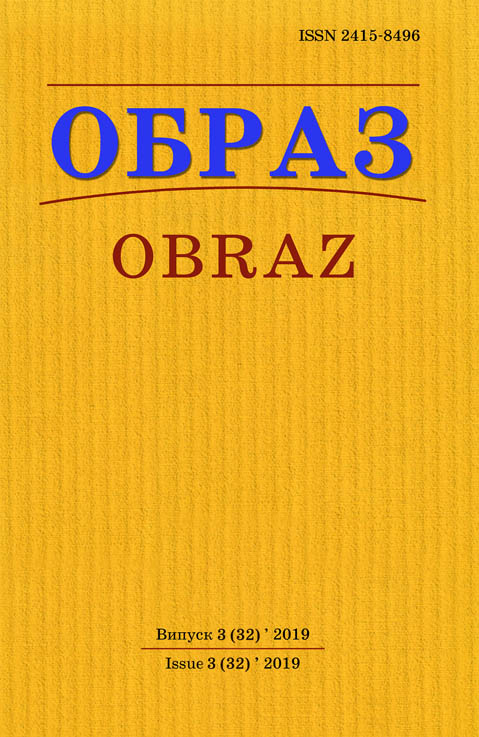Abstract
Introduction. Up to date, the situation in the Ukrainian media space has not changed dramatically from the Soviet Period. This gives wide possibilities for variations to manipulate the minds of the audience, large part of which is made up of people of 55 years of age who are accustomed to reading and trusting the press. Accordingly, the study of the relationship between the audience’s trust in the journalistic publication and the manner of presenting news of the specified category of the population will enable to form ways of introducing media literacy for different categories of society, which is relevant today. Significance and purpose. In our study, we analyze the reactions of this audience as it is the part of the active population that in one way or another influences the formation of conscious perception of the surrounding reality of modern youth. The purpose of the study is to research the relationship between stylistic marking of the text and the audience’s confidence in the information presented in the publication (based on the analysis of regional periodicals 1943-1960). Research methods. During the study such methods as surveys (oral and online surveys) were used to examine the audience’s response to texts of different styles, content analysis, which analyzed the frequency of use of satirical-humorous genres, stylistically labeled vocabulary and religious imagery for criticism/condemnation of those people or phenomena that did not fit into the criteria of the USSR; genre, stylistic and semantic analysis. Results. The analysis of the period 1943-1960 showed that in the newspaper “low” style was used to ridicule those who did not fit into the Soviet system of vision of the state and citizen in the state. As a result, a population of 55+ (experimentally confirmed) formed a well-founded distrust of information presented in a satirical form. This makes it possible to predict its effectiveness and efficiency of journalistic materials. Conclusion. Selected publications analyzed that the Soviet print periodicals clearly distinguished the manner of presenting information about the so-called «positive» and «negative» heroes. At the same time, the survey revealed a tendency of public confidence in information that does not contain stylistically marked vocabulary. Accordingly, we can say that stylistic marking of the text is one of the methods of manipulation of public opinion. Prospective for further research. Studying the peculiarities of the perception of newspaper texts by different categories of the population is a prospect for further research.
References
1. Weizman A. (1957), Housing for workers. October Flag, No.1 (1927), p. 2.
2. Goroshko E. (2013), Typologization of content of modern media (attempt at reflection) [Electronic resource]. Materials of scientific-practical. Conf. «Development of Russian-speaking Media Space: Communication and Ethical Issues» (April 26-27, 2013). – Access mode: http:// www.textology.ru/article.aspx?aId=240.
3. Dudik P. S. (2005), Ukrainian language stylistics: a short terminology dictionary: a textbook. K., 368 p.
4. Krupsky I. (2014), The theme of mass media of Ukraine is an important part of the information space of the state (on the example of Western Ukrainian lands of 1944-1950). Television and radio journalism, vol. 13. pp. 96–103.
5. Lizanchuk V. (2008), Genocide, ethnocide, lingvocide of the Ukrainian nation: Chronicle. Lviv, 258 p.
6. Lizanchuk V. (2018), Educational and manipulative propaganda in the conditions of the present Russian-Ukrainian war. Television and Radio Journalism, iss. 17, p. 23.
7. Mamalyga A., Danilchuk D. (2009), The influence of mass media on the regulation of the chronotopic correspondence of modern city place-names [Electronic resource]. Bulletin of the University of Lviv. Philological Series: Elect. version of 2009. Access mode: http://publications. lnu.edu.ua/bulletins/index.php/philology/article/view/6066
8. Odar A. (1943), Traitor. Soviet Warrior, No. 63 (303), p. 3.
9. Pastushina V. (2018), Propaganda as an ideological component of the Antimony and the nation building magazines. Bulletin of the University of Lviv. Journalism Series, No. 44, pp. 22–27.
10. Respect the reader (1947), October Flag, No.3 (1229), p. 3.
11. Pochapskaya O. I. (2010), Ukrainian satirical journalism of the Dnieper region of the period of national liberation competitions of 1917-1921: monograph. Kamenets-Podilsky, p. 121.
12. Serbenskaya O. (2011), Interference phenomena in public speech. Uzhgorod University Scientific Bulletin. Series: Philology. Social Communications, pp. 177-181.
13. Kholod O. (2010), Society’s Inmutation in the Hypermarket of Consciousness: in 3 vols, vol. 1: The theory of society’s inmutation: monograph, K., 213 p.
14. 1957 (1957), Flag of October, 1957, No. 1 (1927), p. 1.

This work is licensed under a Creative Commons Attribution 4.0 International License.

